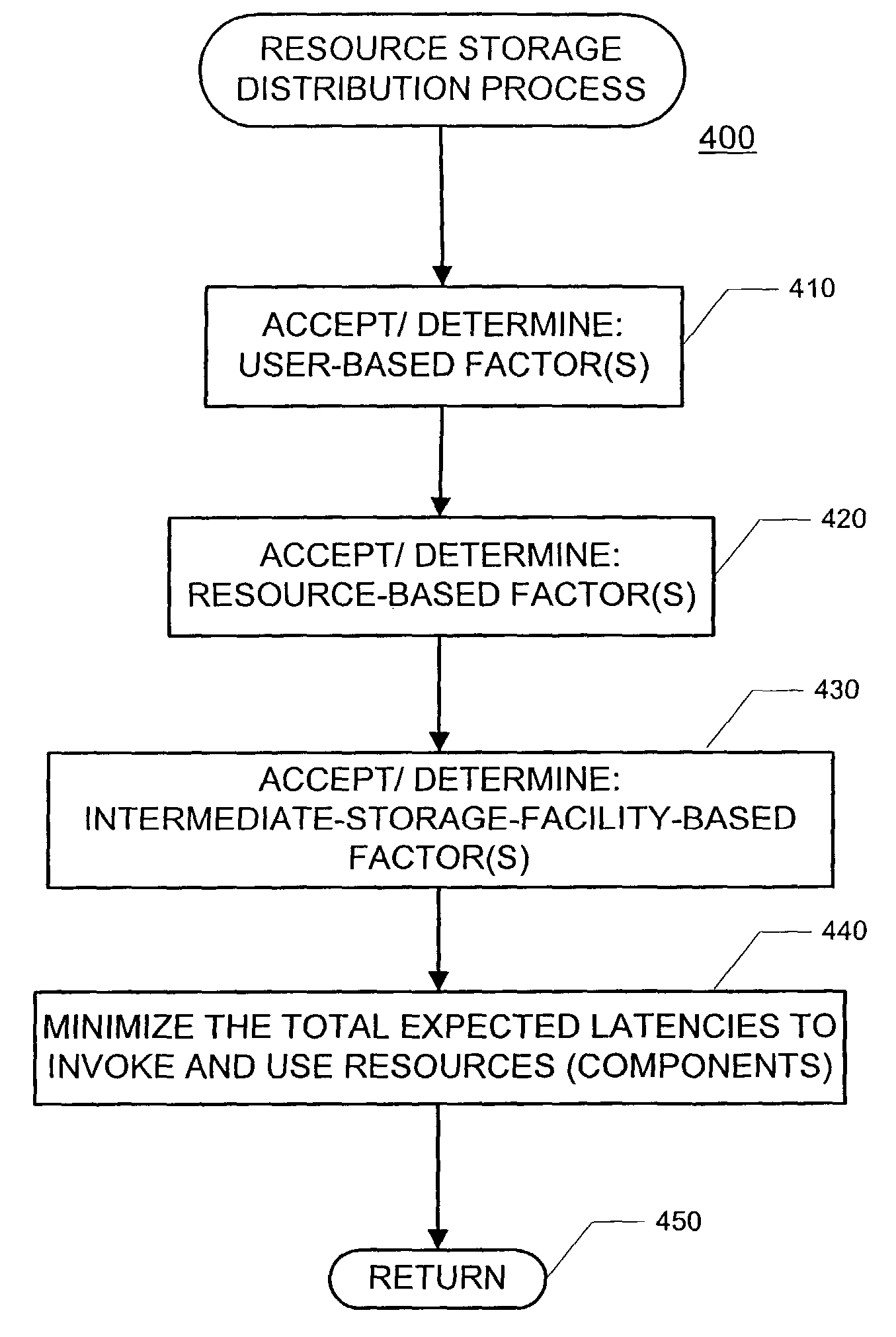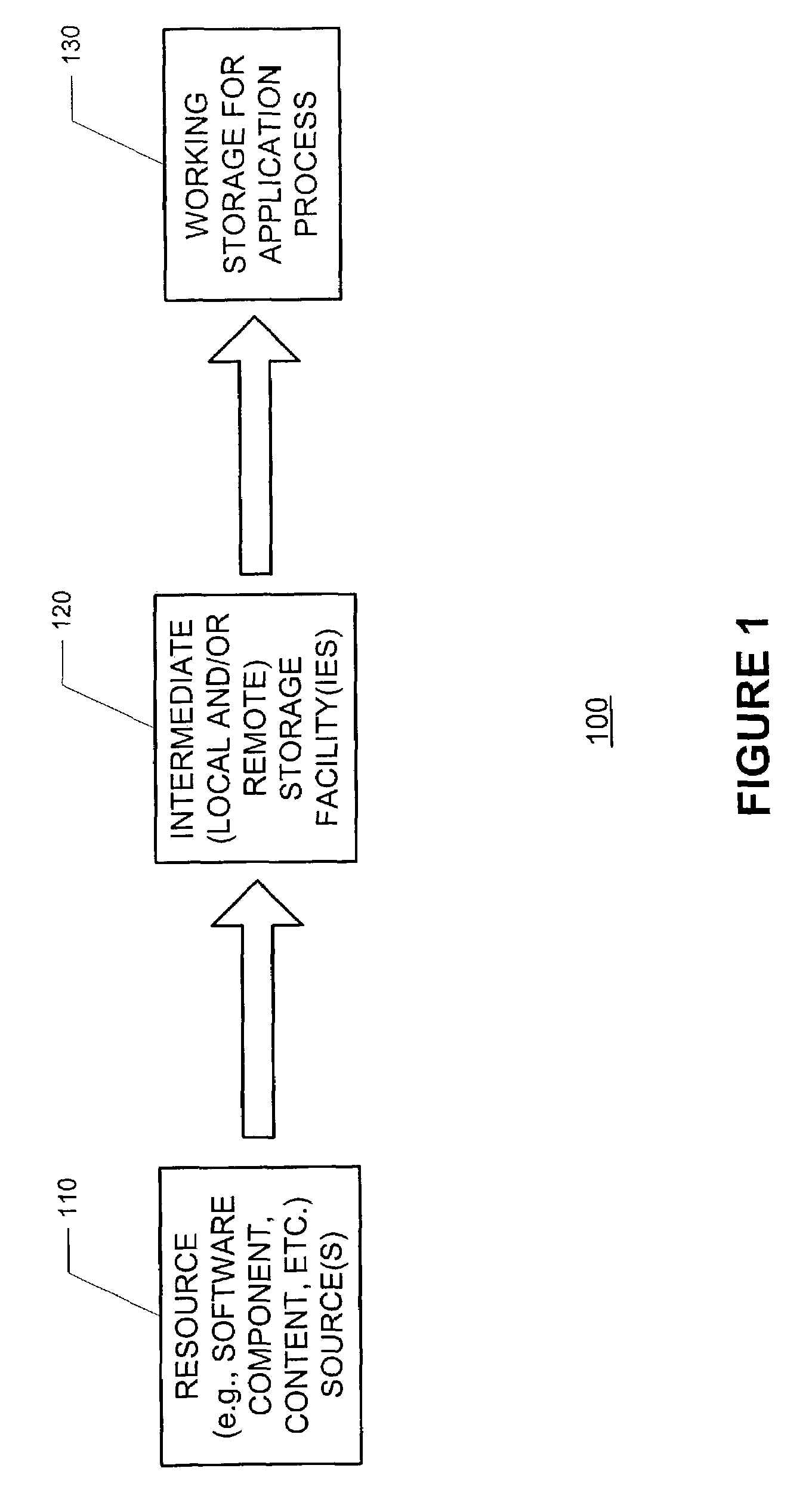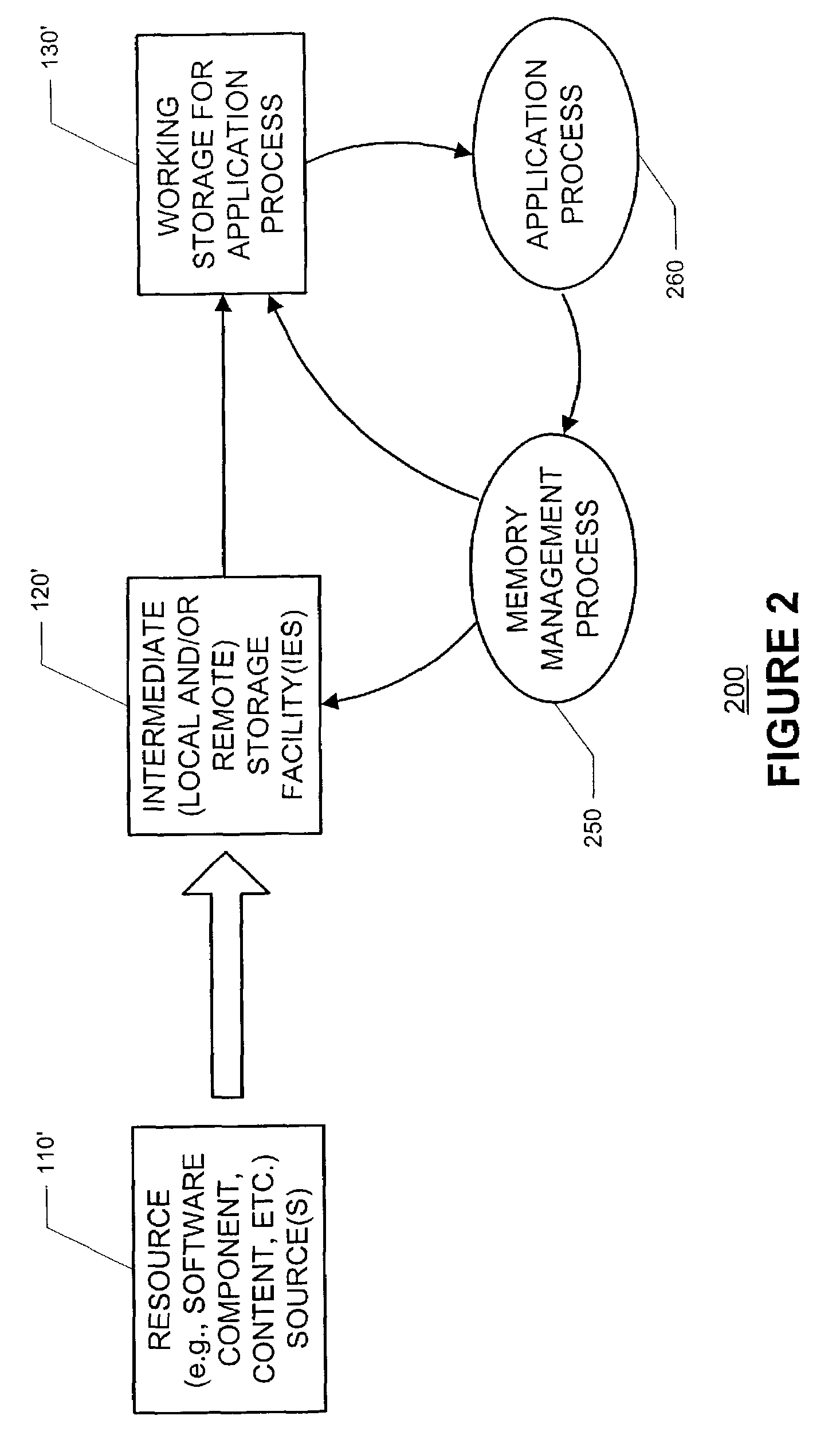Methods and apparatus for downloading and/or distributing information and/or software resources based on expected utility
a technology of information and/or software resources, applied in the direction of digital transmission, program control, instruments, etc., can solve the problems of limited resources that can be downloaded, finite disk drive resources that often must be rationed, personal computers do not have this much magnetic hard disk storage capacity, etc., to maximize the expected value of downloading resources and minimize the expected cost
- Summary
- Abstract
- Description
- Claims
- Application Information
AI Technical Summary
Benefits of technology
Problems solved by technology
Method used
Image
Examples
first exemplary embodiment
[0242]§ 4.3.1 Example of Operation of First Exemplary Embodiment
[0243]FIG. 20 illustrates the flow of data in an exemplary operation of the first exemplary embodiment. As shown in flow 2010, user type classes and resource (or component) information may be provided from the CD ROM 110′ / 710 to the component installation process 770. Based on the user type classes, as shown in flow 2020, the resource (or component) installation process may request evidence of user type class. Such evidence may be found on the non-volatile storage facility(ies) 120 / 720 and / or may be provided via user responses to queries generated by the resource (or component) installation process 770. As shown in flow 2030, this user type class probability evidence may be provided to the resource (or component) installation process 770. Using the user type class probability evidence and the resource (or component) information, the resource (or component) installation process 770 may determine which resources (or compo...
second exemplary embodiment
[0244]§ 4.3.2 Example of Operation of Second Exemplary Embodiment
[0245]FIG. 21 illustrates the flow of data in an exemplary operation of the second exemplary embodiment. As shown in flow 2110, user type classes and resource information may be provided from the resource source (such as a docking station for example) 110′ / 1310 to the resource download process 1370. Based on the user type classes, as shown in flow 2120, the resource download process 1370 may request evidence of user type class. Such evidence may be found on the non-volatile storage facility(ies) 120 / 1320 and / or may be provided via user responses to queries generated by the resource download process 1370. As shown in flow 2130, this user type class probability evidence may be provided to the resource download process 1370. Using the user type class probability evidence and the resource information, the resource download process 1370 may determine which resources to download, as described in § 4.2.3 above. As shown in fl...
third exemplary embodiment
[0246]§ 4.3.3 Example of Operation of Third Exemplary Embodiment
[0247]FIG. 22 illustrates the flow of data in an exemplary operation of the third exemplary embodiment. As shown in flow 2210, user type classes, resource information, and storage facility information may be provided from a higher request-to-receive time (also referred to as “latency”) storage facility 1510 to the resource storage distribution process 1570. As shown in flow 2220, storage facility(ies) information may also be provided from a lower latency storage facility 1520 to the resource storage distribution process 1570. Based on the user type classes, as shown in flow 2230, the resource storage distribution process 1570 may request evidence of user type class. Such evidence may be found on one of the storage facilities 1510 or 1520 and / or may be provided via user responses to queries generated by the resource storage distribution process 1570. As shown in flow 2240, this user type class probability evidence may be...
PUM
 Login to View More
Login to View More Abstract
Description
Claims
Application Information
 Login to View More
Login to View More - R&D
- Intellectual Property
- Life Sciences
- Materials
- Tech Scout
- Unparalleled Data Quality
- Higher Quality Content
- 60% Fewer Hallucinations
Browse by: Latest US Patents, China's latest patents, Technical Efficacy Thesaurus, Application Domain, Technology Topic, Popular Technical Reports.
© 2025 PatSnap. All rights reserved.Legal|Privacy policy|Modern Slavery Act Transparency Statement|Sitemap|About US| Contact US: help@patsnap.com



